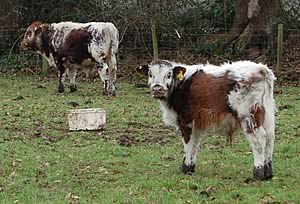 |
|||||||||
|
|||||||||||||||||||
|
|
Rare
Breeds 'Watchlist': Good News And Bad Three breeds taken off, one added, plus 'serious concern' for Dales ponies and North Ronaldsay sheep.
“We are delighted that numbers of Longhorn cattle, Wiltshire Horn and Kerry Hill sheep have increased sufficiently to be removed from the list,” said Robert Terry, the Executive Director of the Rare Breeds Survival Trust. “But they will continue to be monitored closely and any significant drops in the numbers of breeding females will mean that they will be returned to the Watchlist.” Speaking about the huge drop in the total of Dales ponies he commented, “This reflects just how few filly foals are being bred and registered. Most horse and pony mares are not used for breeding, so the success of a breed in the show ring may not be reflected in numbers.” He continued, “There are now less than 300 registered Dales breeding mares. I would ask anyone with mares to think seriously about their breeding plans for 2006. If there are any problems with sourcing a stallion, please contact the Dales Pony Society.” North Ronaldsay sheep have been recatogorised because of a change in the way they are counted. Robert Terry explained: “The Trust is now using registered female lamb numbers to estimate number of breeding ewes rather than just registered ewes of breeding age. This means that animals used for conservation grazing which are not used for breeding will no longer be counted. This has had a dramatic effect on how the North Ronaldsay is categorised, and highlights the genuinely critical status of this breed.” Other changes in the annual list include: CattleIn addition to the Longhorn, there are several other success stories. Shetland and the Lincoln Red populations are downgraded from Critical to Endangered. The Gloucester has increased significantly in numbers and moves to Vulnerable, along with the White Park. The Traditional Hereford, Beef Shorthorns and Red Poll are downgraded to At Risk. SheepBreeds where numbers have dropped sufficiently for them to move into a rarer category are the Dorset Down, Hill Radnor, Soay, Devon and Cornwall Longwool, Oxford Down, Shropshire and the Whitefaced Dartmoor. Breeds proving to be more successful and which have increased in numbers are the Balwen, Llanwenog and South Down. As mentioned earlier, the Wiltshire Horn and Kerry both go off the Watchlist. Horses and poniesIn contrast to the experience of the Dales pony, the Fell moves from Endangered to Vulnerable and may drop another category next year if numbers continue to improve. PoultryAll poultry breeds stay in the same categories due to lack of updated information because registration data is not available. However, the Trust expects to receive information from a recently distributed avian influenza questionnaire, which will be used to update the watch list next year. PigsFemale registration data was not available for the 2006 list so
the annual survey has been used, as in previous years. The RBST
is working closely with the British Pig Association and updated
information, based on female registrations, should be available
for the 2007 watchlist.
|
||||||||||||||||||

|
|
||||||||||||||||||
| home | agri-services | pedigree
pen | news | dairy | beef | machinery quota | property | organisations | site map |
|||||||||||||||||||

